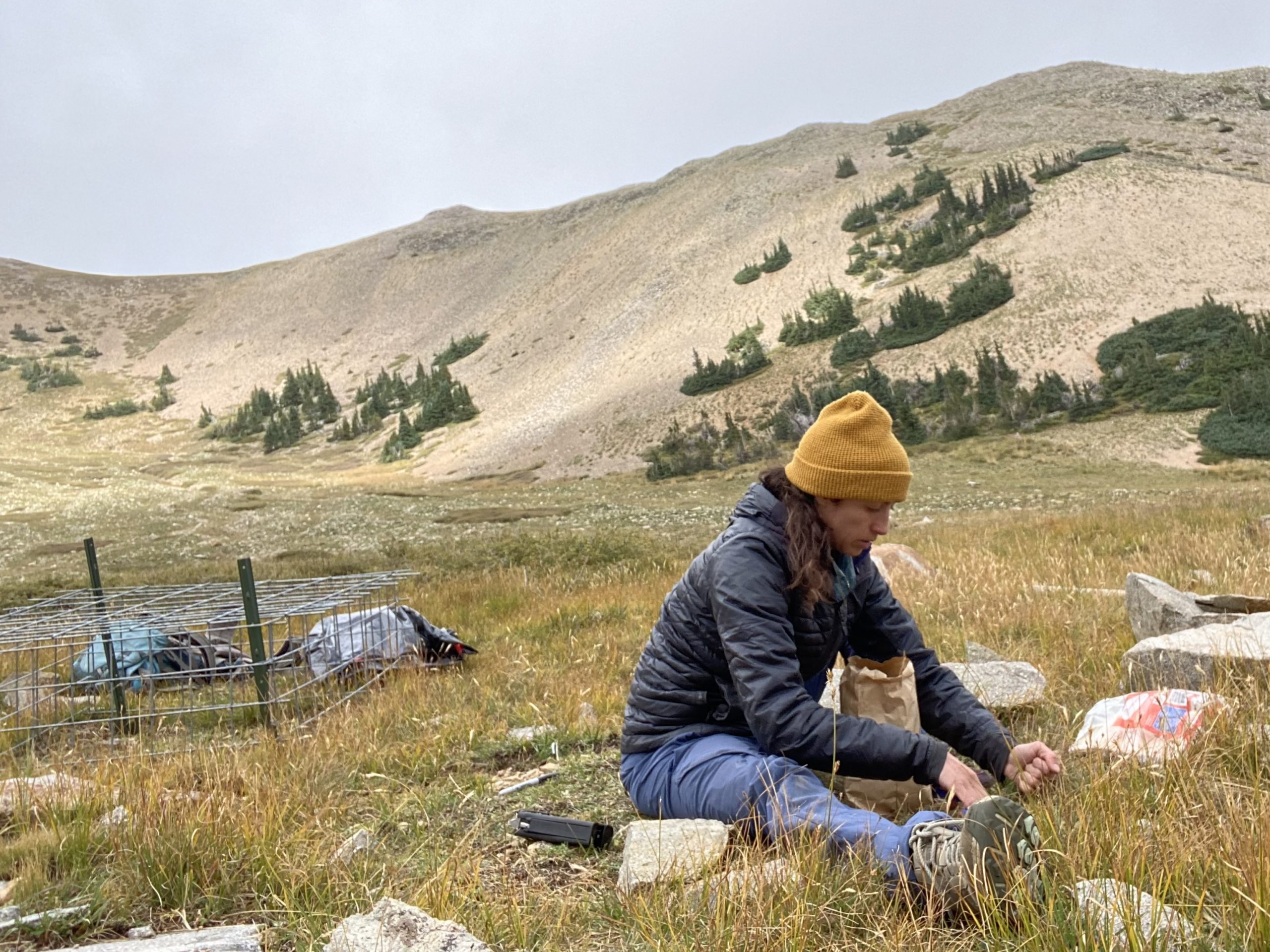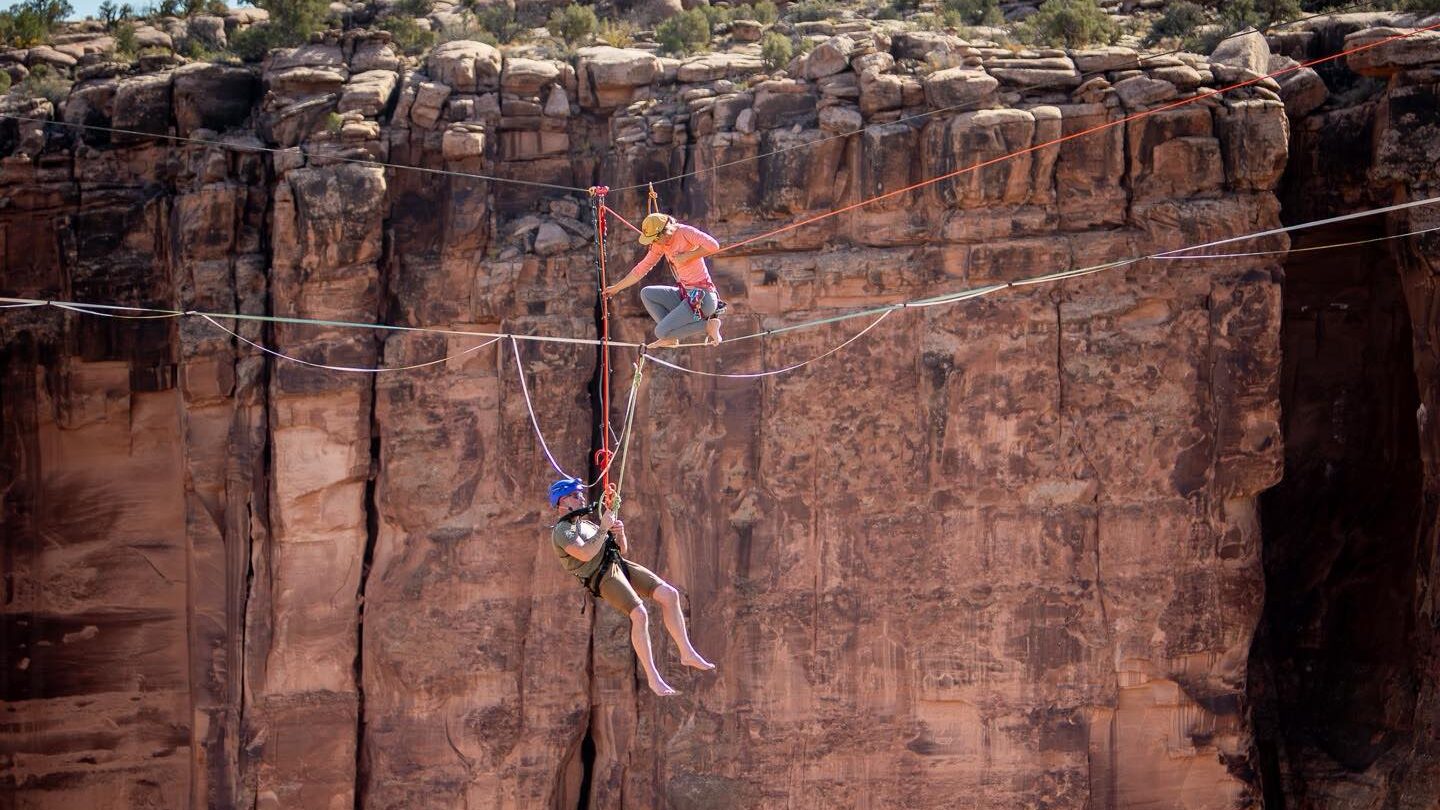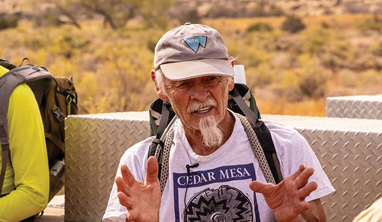Some information may be outdated.
Mallory Lambert was assisting Johanna Varner, an associate professor of biology at Colorado Mesa University, on a research project in the La Sal Mountains when she noticed something that caught her attention: mountain goats grazing in the same area where she had seen pikas gathering food.
As a wildlife ecologist, she thought, what is the relationship between those two animals, which are both herbivores and high-alpine specialists? Do they support each other, or are they competing?
Mountain goats were introduced to the La Sal mountains by the Utah Division of Wildlife Resources beginning in 2013: 20 goats were transplanted in 2013 and 15 in 2014, with the hope that the goat population would increase to at least 200 (mountain goat tourism—hunting and viewing—is extremely popular in Utah). The introduction faced pushback nearly immediately. A High Country News article published in 2014 after the second transplant cited opposition from the regional Forest Service and local Moabites like Chris Baird and Mary O’Brien.
The pika population in the La Sals, on the other hand, is entirely native, and they’re an isolated population too, cut off from other mountain ranges. While pikas and mountain goats have overlapping habitats in northern parts of the country, their exact relationship has never been studied. Now that it’s relatively new in the La Sals, scientists have a chance to define it, and according to Lambert, mountain goats are the most under-researched North American ungulate.
For the past two years, Lambert has worked on a research project studying the relationship between the two alpine mammals (Moabites may remember her talk during the Canyonlands Natural History Association lecture series last summer), and in January, Lambert was again awarded funding from CNHA to continue her research.
“There’s relatively little known about pika interactions with other species, which have a really big impact on ecosystem-level dynamics,” Lambert said. “It’s important to understand how these [high alpine] systems function so that we can anticipate and potentially mitigate the impacts of climate change on alpine environments.”
The experiment is set up now with 10 exclosure sites. Each site, located in various spots near talus patches where both the animals have been seen foraging, is constructed with three one-meter by one-meter boxes. One has no exclosure infrastructure, so both animals can feed; the second has goat exclosure infrastructure, so only pikas can feed; and the third has total exclosure.
“The past two summers have been just getting the project up off the ground,” Lambert said. “I feel like I really got a handle on everything last year. The next two summer field seasons will be largely focused on the new grazing exclosures—we’ll be monitoring those sites, collecting animal behavior data, and conducting DNA analyses of the scat samples in each animal.”
Pikas are a climate change indicator species: pikas are averse to heat, and research has found that in general, when the pikas’ habitat heats up, the population is negatively impacted. Pika populations have been declining since 2016, when United States Geologic Survey research found evidence of “widespread reduction in pika range in three mountainous regions including the Great Basin, southern Utah, and northeastern California.”
“Pikas have become a poster child for climate change in a lot of ways,” said Johanna Varner, a professor of biology at Colorado Mesa University whose research focuses on how pikas respond to climate change and disturbance. “But the way they’re responding to climate change is super variable across the range—in some populations, they’re definitely declining, but in others, they seem relatively resilient. We’re still unpacking why that is, and what features facilitate them doing well in certain parts of their range but not in others.”

Pikas have been known to thrive when they have access to rock ice features, or rock glaciers: places where big deposits of ice form underneath rocks, Varner said. The ice creates a microclimate—a cool and chilly place where pikas can go when it’s warm out—and also acts as a slow-release water source, which facilitates vegetation growth.
So if mountain goats, a non-native, introduced species, are further impacting pika populations by competing with them, then land managers might have to revisit how to better manage the mountain goat population.
But there’s also a possibility that the two species help each other, Lambert said. In that case, land managers could potentially plan transplant efforts with mountain goats into places where the pika population isn’t doing so well to possibly help them thrive, or vice-versa.
Lambert is also monitoring the “haying” behavior of pikas: when pikas gather food, they will gather it into a pile. When that pile is forgotten about, or goes uneaten, it forms something similar to a mini compost pile as it decays, facilitating plant growth. Varner said in Oregon, hay piles are easy to find because most of the time, an elderberry shrub is growing out of it. If something like that were happening in the La Sals, it’s likely mountain goats, and other animals, could snack on the hay pile-fed plant.
The research is only in its second year, so Lambert said she doesn’t have any conclusive evidence one way or the other yet. Since there isn’t a large body of research for either animal, she’s starting nearly from the beginning.
“The implications of [Lambert’s research], of unpacking this interaction could have really important implications for how these species are managed, and understanding a little bit more about how everything is connected,” Varner said. “I think it’ll hopefully provide really useful information for land managers and wildlife managers to be able to set everybody up for success.”
Appreciate the coverage? Help keep local news alive.
Chip in to support the Moab Sun News.





